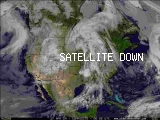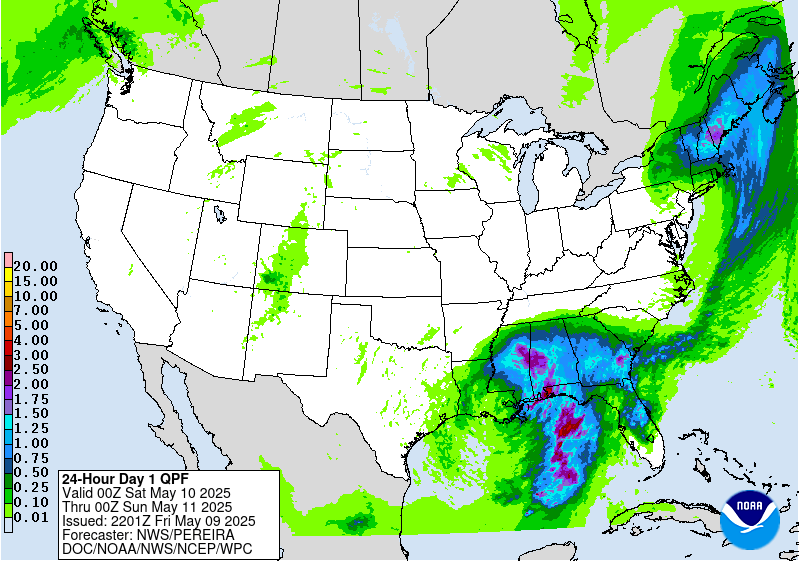|
Ozark, Missouri 7 Day Weather Forecast
Wx Forecast - Wx Discussion - Wx Aviation
|
NWS Forecast for Ozark MO
National Weather Service Forecast for:
Ozark MO
Issued by: National Weather Service Springfield, MO |
| Updated: 12:11 am CST Dec 6, 2025 |
|
Overnight

Patchy Fog
|
Saturday

Patchy Fog
then Mostly
Sunny
|
Saturday
Night

Mostly Cloudy
then Patchy
Fog
|
Sunday

Mostly Cloudy
|
Sunday
Night

Mostly Cloudy
|
Monday

Mostly Sunny
|
Monday
Night

Mostly Clear
|
Tuesday

Sunny
|
Tuesday
Night

Mostly Cloudy
|
| Lo 33 °F |
Hi 50 °F |
Lo 35 °F |
Hi 43 °F |
Lo 19 °F |
Hi 42 °F |
Lo 26 °F |
Hi 54 °F |
Lo 39 °F |
|
Hazardous Weather Outlook
Dense Fog Advisory
Overnight
|
Patchy fog after 5am. Otherwise, mostly cloudy, with a steady temperature around 33. Light west wind. |
Saturday
|
Patchy fog before 11am. Otherwise, partly sunny, with a high near 50. Wind chill values as low as 31 early. Calm wind becoming south 5 to 8 mph in the morning. |
Saturday Night
|
Patchy fog after 4am. Otherwise, mostly cloudy, with a low around 35. Southeast wind 5 to 8 mph becoming west after midnight. |
Sunday
|
Mostly cloudy, with a high near 43. Wind chill values as low as 28. Northwest wind 7 to 13 mph, with gusts as high as 20 mph. |
Sunday Night
|
Mostly cloudy, with a low around 19. North wind 5 to 10 mph, with gusts as high as 20 mph. |
Monday
|
Mostly sunny, with a high near 42. |
Monday Night
|
Mostly clear, with a low around 26. |
Tuesday
|
Sunny, with a high near 54. |
Tuesday Night
|
Mostly cloudy, with a low around 39. |
Wednesday
|
Mostly sunny, with a high near 53. |
Wednesday Night
|
Partly cloudy, with a low around 30. |
Thursday
|
Mostly sunny, with a high near 50. |
Thursday Night
|
Partly cloudy, with a low around 26. |
Friday
|
Mostly sunny, with a high near 41. |
Forecast from NOAA-NWS
for Ozark MO.
|
Weather Forecast Discussion
066
FXUS63 KSGF 060553
AFDSGF
Area Forecast Discussion
National Weather Service Springfield MO
1153 PM CST Fri Dec 5 2025
.KEY MESSAGES...
- Patchy fog/freezing fog could form tonight especially for
areas along and west of Highway 65. Use caution if traveling
tonight.
- Low precipitation chances 10-20% Saturday night into Sunday
morning across central Missouri. Little to no accumulations
are expected.
- Increasing confidence in a warming trend toward above normal
temperatures into next week. Average highs for this time
period range from 45 to 50 degrees. Mostly dry weather
accompanies this pattern.
&&
.SHORT TERM /THROUGH SUNDAY/...
Issued at 142 PM CST Fri Dec 5 2025
A surface low pressure system has been making its way towards
the Great Lakes region throughout the morning and afternoon
hours, lifting an associated warm front northeast through our
area. Behind this front, satellite imagery showed a stratus
deck infiltrating southwest Missouri this morning, which has
since deteriorated. The sun has begun to heat temperatures back
up, however went ahead and lowered highs just a degree or two
below the previous forecast to account for the cloud cover late
morning/early afternoon that persisted until ~18-19Z. This
should keep highs in the low to mid 40s for today (up to the
upper 40s towards the MO/AR border), which is below normal for
this time of year.
Breezy southwesterly winds will begin to diminish throughout the
evening hours, becoming light later tonight. An upper level
trough currently extending through the Plains into the Four
Corners Region will continue pushing towards the area tonight
into tomorrow, with the southerly flow increasing the moisture
across the region. As a result, there`s a pretty good signal for
fog developing overnight, especially along and west of Highway
65 (highest chances), as well as areas north of Highway 60 (more
patchy in areas). HREF probabilities of visibilities dropping
below 1 mile ranges between 60-80%, with 50-70% chances below
1/4 mile. With temperatures dropping below freezing tonight
(lows in the upper 20s to low 30s), some freezing fog may also
be possible. Cloud cover is expected to increase as we head into
tonight with the upper system approaching from the west, so
timing in that as well as the diminishing winds will really be a
factor in fog development, how dense it becomes, and how long
it lasts. We`ll continue to monitor observations and trends
through this evening/overnight and assess any future need for
advisories. Keep in mind, freezing fog doesn`t have to be dense
to be impactful. Elevated surfaces/roadways may become icy with
any freezing fog that can occur, so make sure to use caution if
traveling later tonight.
&&
.LONG TERM /SUNDAY NIGHT THROUGH FRIDAY/...
Issued at 142 PM CST Fri Dec 5 2025
As the upper level trough continues pushing through the central
CONUS tonight/tomorrow, another shortwave disturbance will dip
southeast through the region, with an associated surface low
progged to move southeast through our forecast area Saturday
night/Sunday morning. As it stands, there are low chances
(10-20%) of any precipitation in our area from this system, as
most should be focused over northeast Missouri. Any
precipitation that can push south would be focused north of
Highway 54, and would primarily be in the form of rain since
temperatures should stay above freezing when the precip moves
through. That being said, we`re continuing to see a pretty good
drizzle signal for areas along/north of Highway 60 (after
sunrise Sunday), with ample moisture (0-1km RH >95%), pockets of
lift, and a lack of cloud ice. There`s still uncertainty
regarding the potential for freezing drizzle, as temperatures
will be hovering around/above freezing in the general area that
could get drizzle. As of right now, temperatures look to be too
"warm" (mid to upper 30s) during this time, which would mitigate
any freezing drizzle potential. IF we see freezing drizzle, it
would primarily be limited to our northern-most tier of counties
north of Highway 54 where temperatures are closer to the
freezing mark. We`ll have to continue monitoring the drizzle
signal as we head into tomorrow/tomorrow night and get a better
handle on the effects from this disturbance.
Models then showcase an upper level ridge building over the
western CONUS early next week, with additional waves of upper
level disturbances pushing around the region through at least
midweek. With midlevel heights rising, highs will climb into the
50s Tuesday and Wednesday, with dry conditions expected through
this time. By Wednesday night/Thursday, another upper level
shortwave is progged to pivot north of the area across the
Northern Plains southeast into the Ohio Valley, dragging an
additional cold front through the area. As of right now,
precipitation chances look to remain outside our area, however
there are still many discrepancies regarding timing and
intensity of this system. Therefore, precipitation chances and
temperatures will need to continue being assessed as we get
closer to this time period.
&&
.AVIATION /06Z TAFS THROUGH 06Z SUNDAY/...
Issued at 1121 PM CST Fri Dec 5 2025
Ceilings and visibilities start to drop over the next couple of
hours as fog will start to form. A few areas may be dense and a
dense fog advisory will likely be issued for the TAF sites
tonight as visibilities could get down to 1/4 SM and ceilings
will drop to IFR/LIFR. There could be a few areas where freezing
fog occurs if low temperatures can get below 32 degrees. VFR
returns late tomorrow morning after 15z but high clouds will
stick around. Southerly winds will remain light on Saturday at
less than 10 knots.
&&
.SGF WATCHES/WARNINGS/ADVISORIES...
KS...None.
MO...None.
&&
$$
SHORT TERM...Melto
LONG TERM...Melto
AVIATION...Soria
View a Different U.S. Forecast Discussion Location
(In alphabetical order by state)
|
|
|
|




























































































